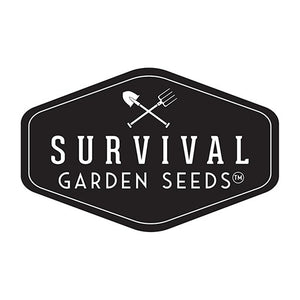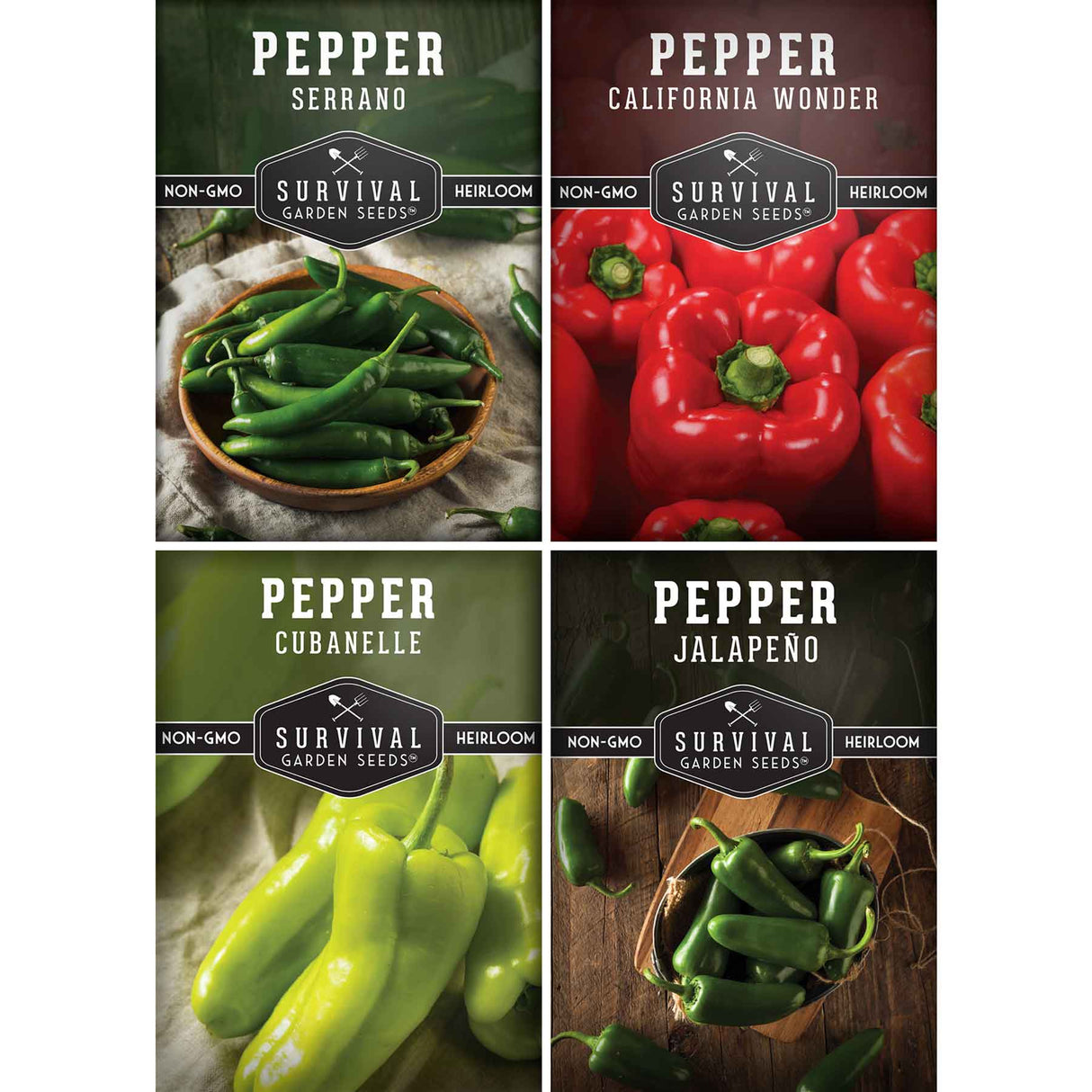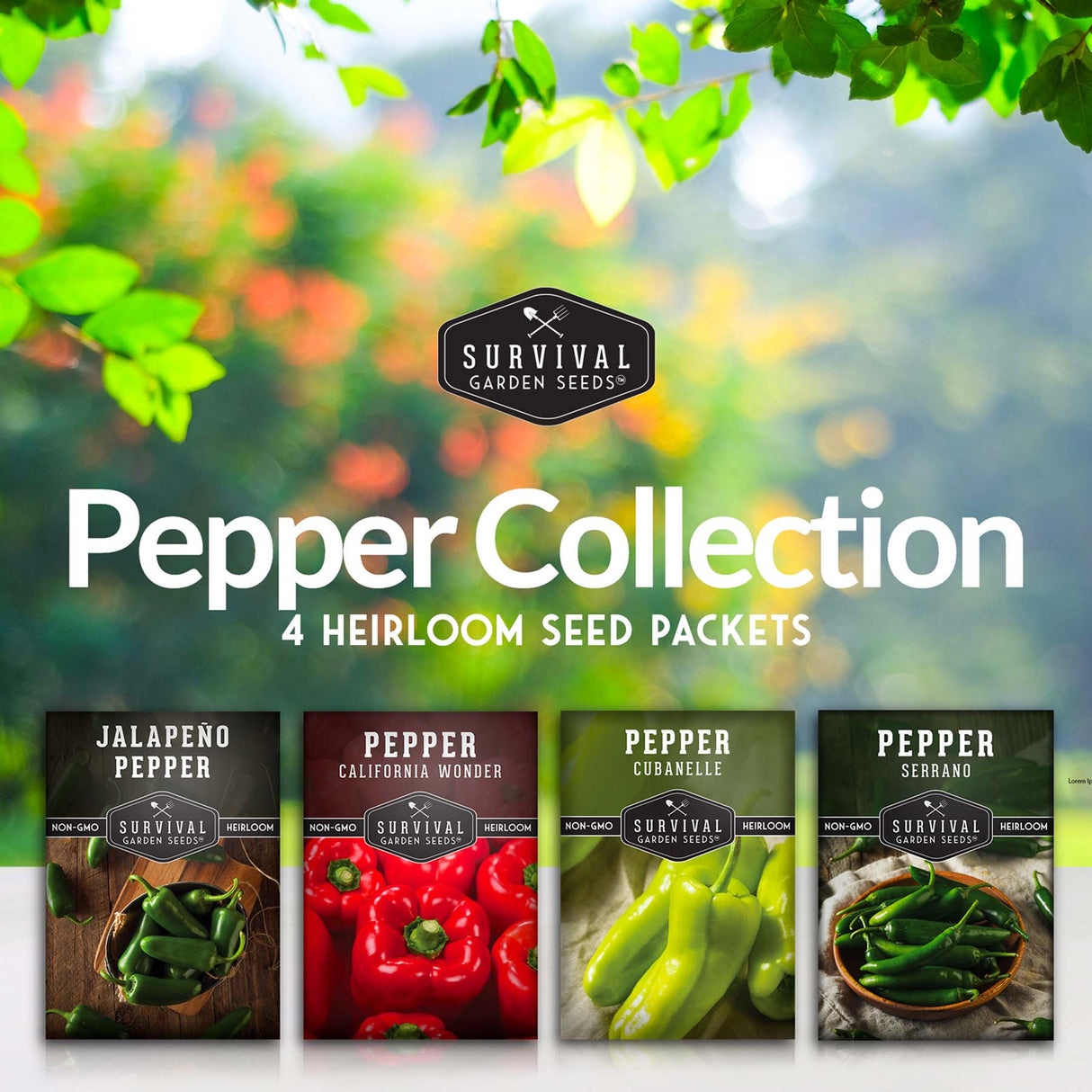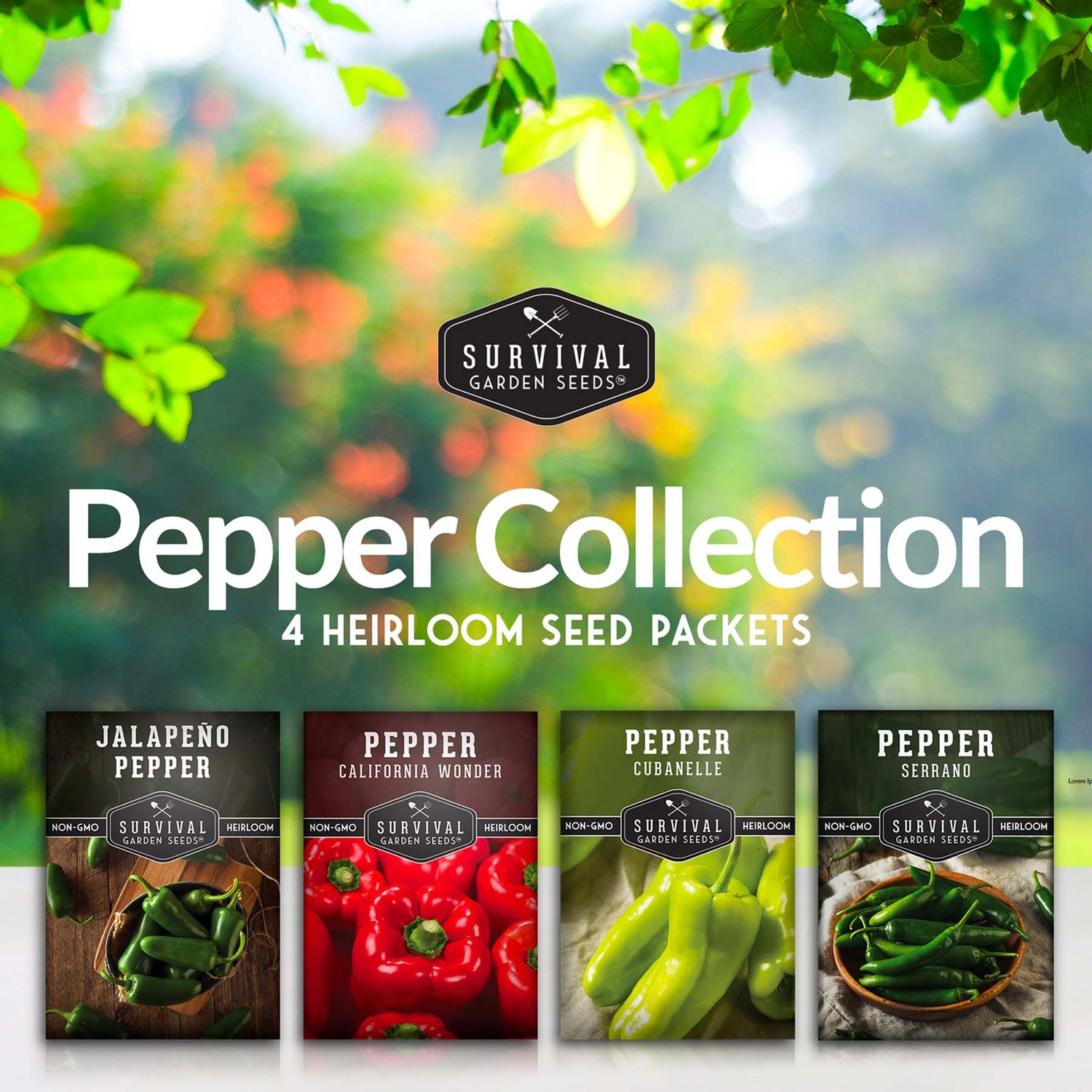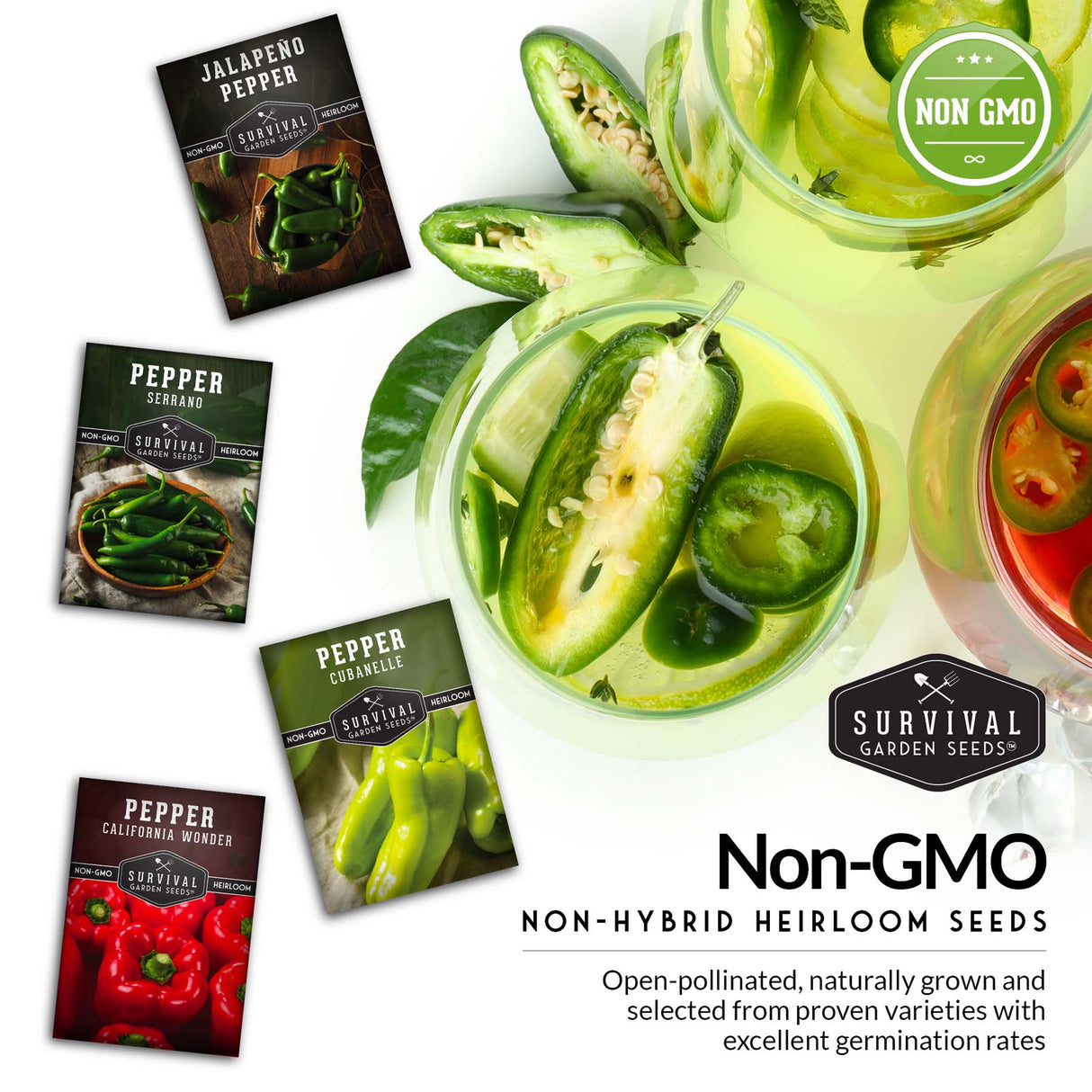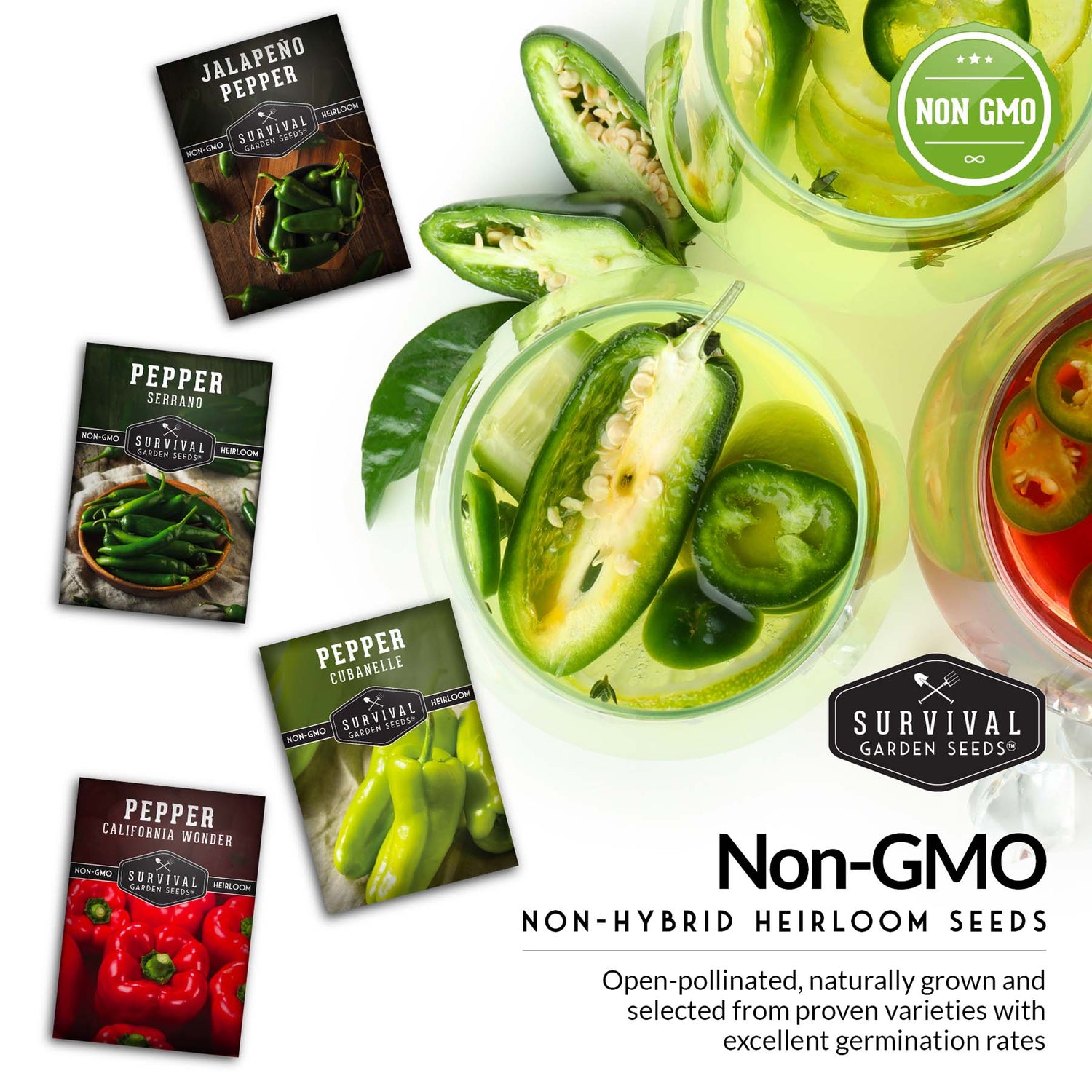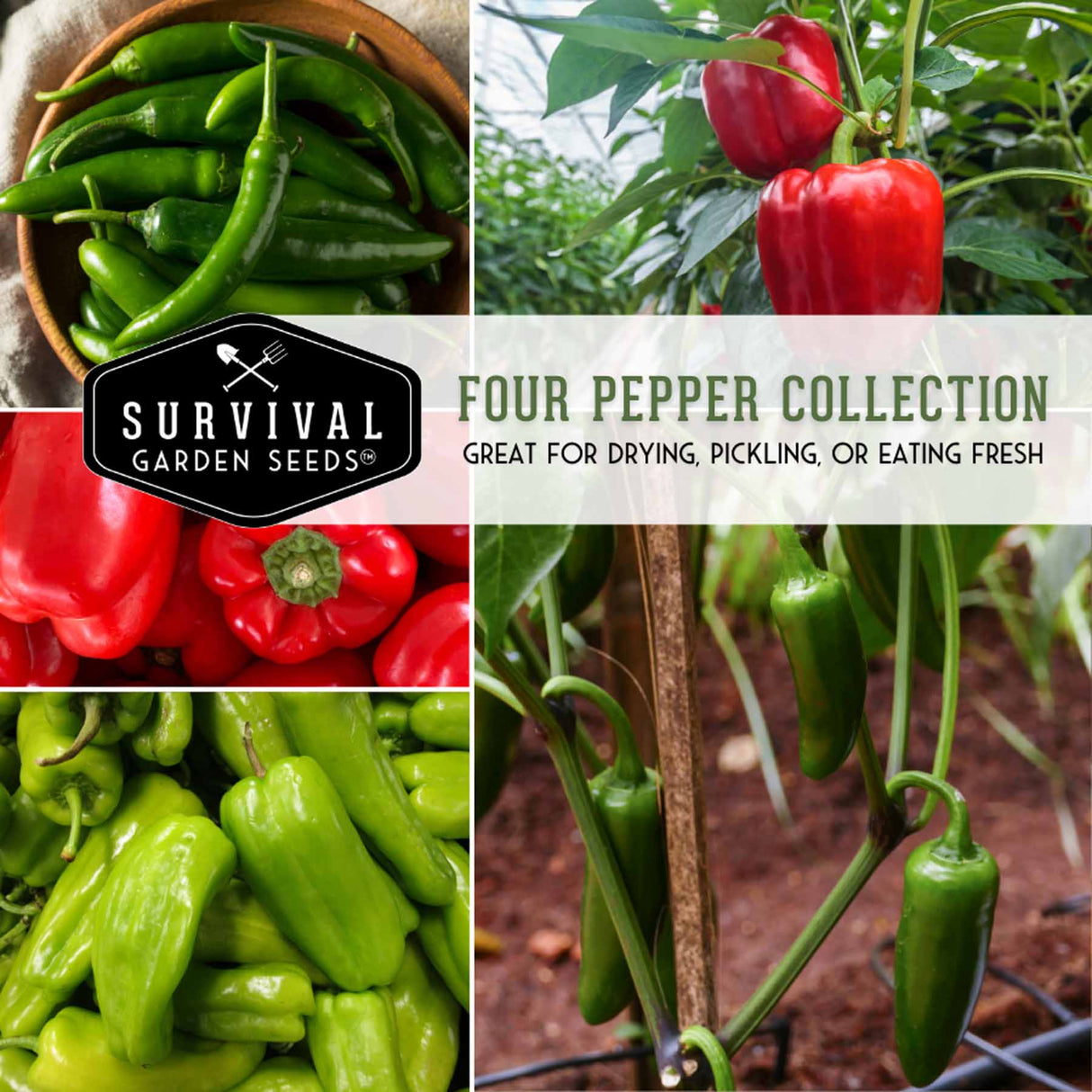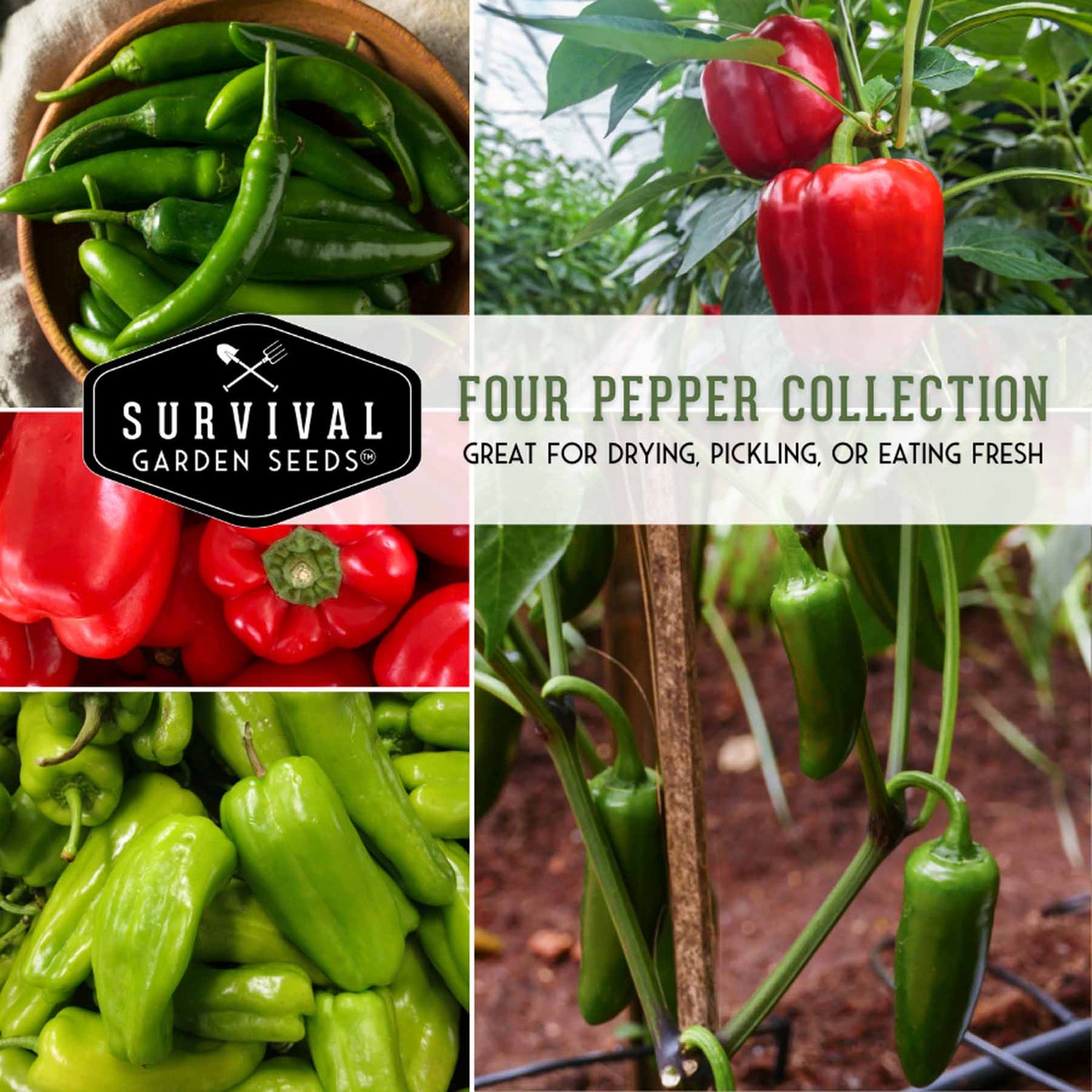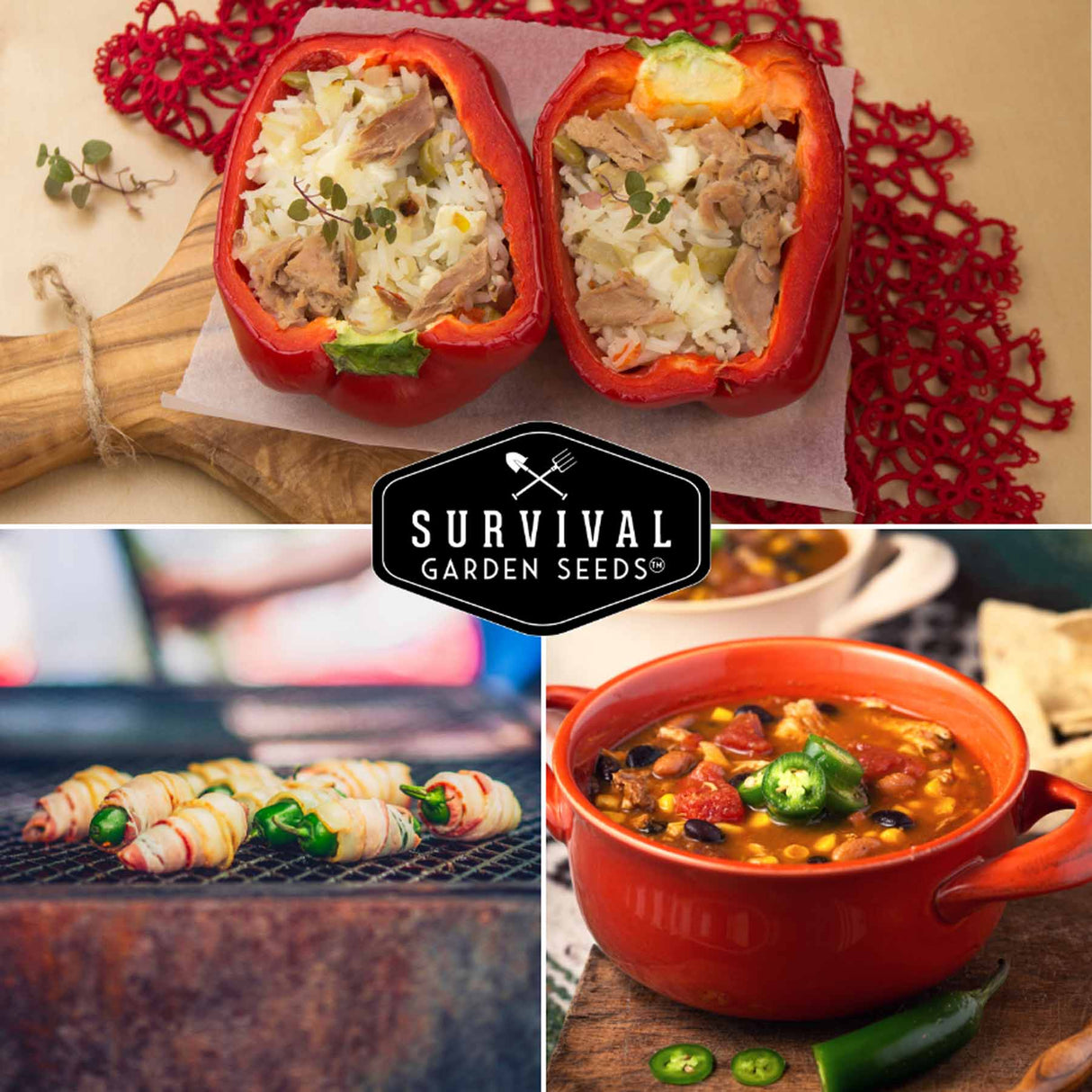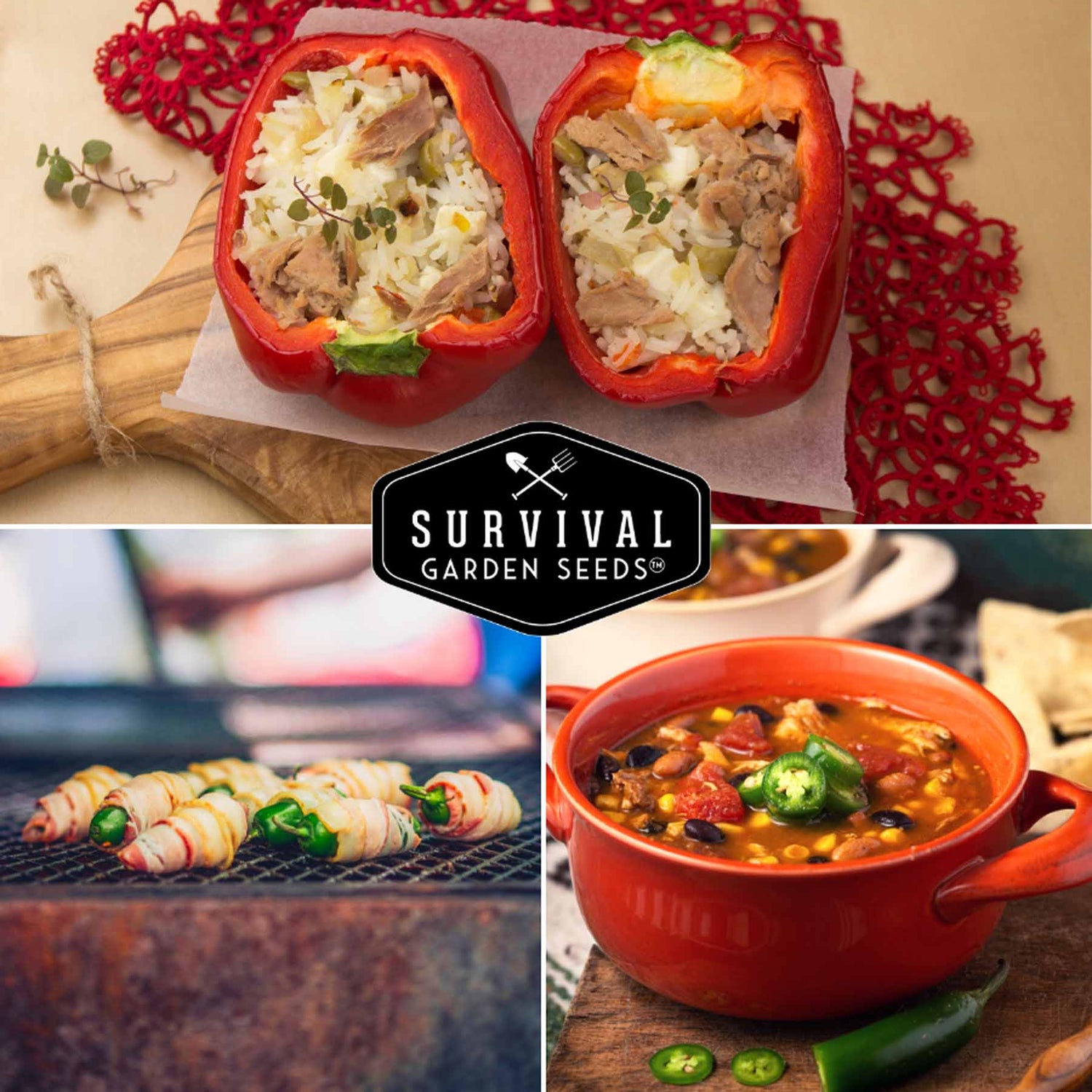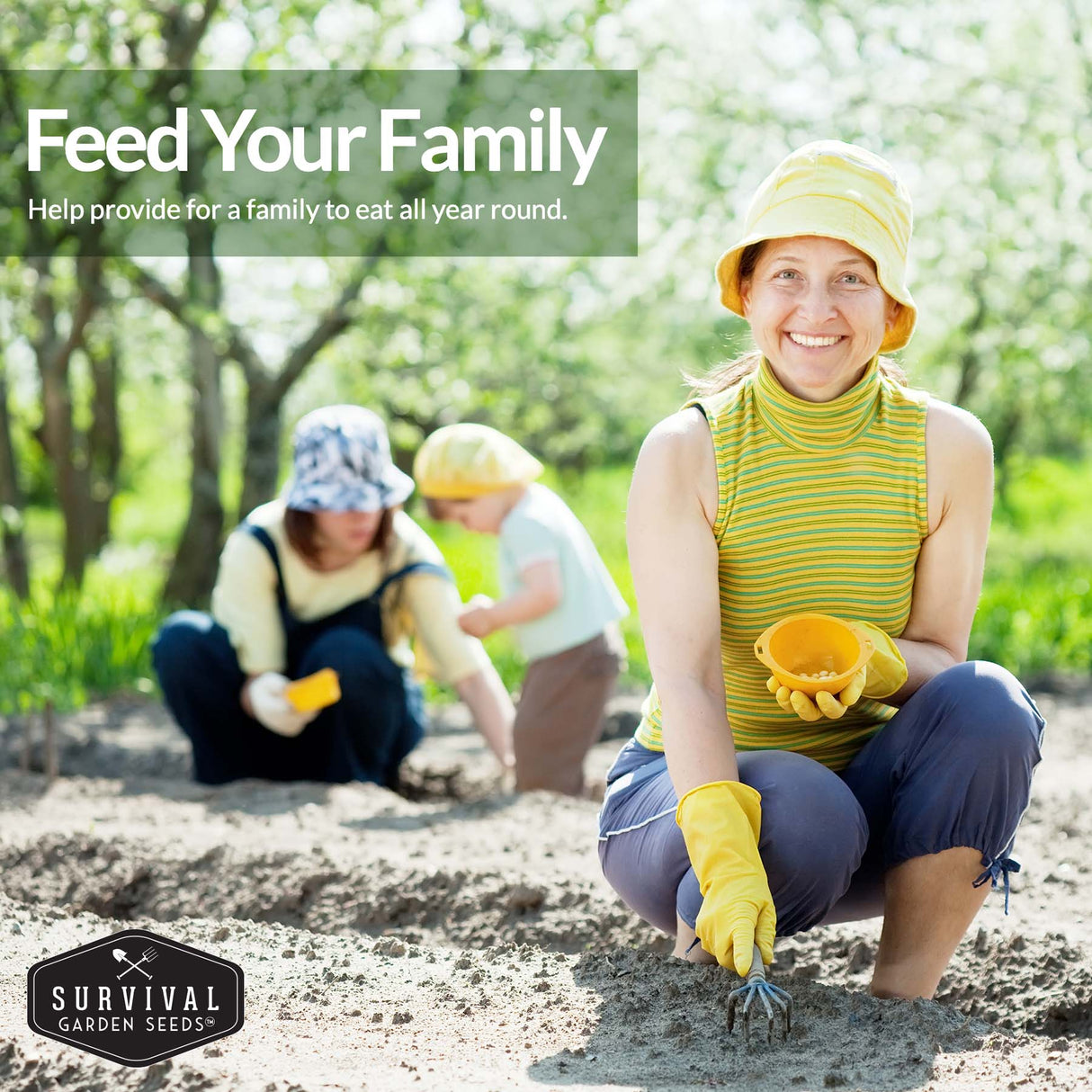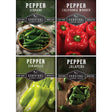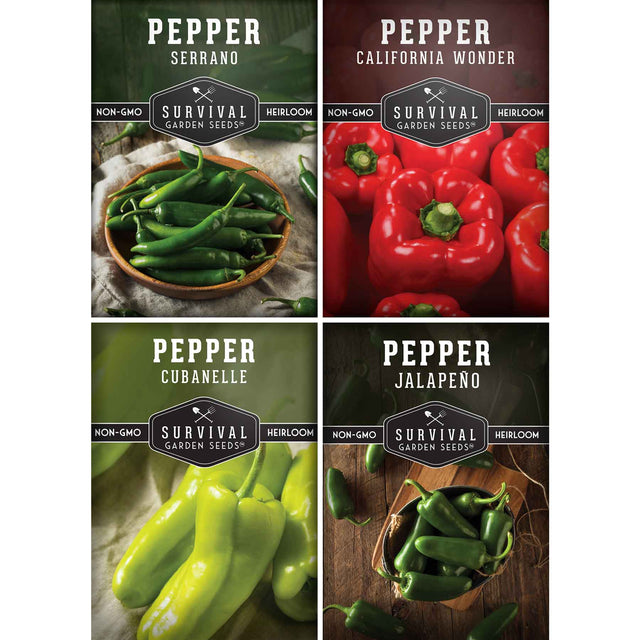4 Pepper Seed Collection – Heirloom Non-GMO Hot & Sweet Peppers for Salsas, Roasting & Fresh Garden Harvests
Heirloom - Non-GMO - Reliable Germination
4 Pepper Seed Collection – Heirloom Non-GMO Hot & Sweet Peppers for Salsas, Roasting & Fresh Garden Harvests is backordered and will ship as soon as it is back in stock.
Couldn't load pickup availability
Experience the perfect blend of flavor and versatility with the 4 Pepper Seed Collection from Survival Garden Seeds. This curated assortment includes Jalapeño, Serrano, Cubanelle, and California Wonder—four heirloom Capsicum annuum varieties chosen for their reliability, productivity, and balanced mix of heat and sweetness.
Ideal for home gardeners and fresh-food enthusiasts, this collection lets you grow peppers for every use:
Jalapeño & Serrano: Medium-heat peppers with bold, earthy flavor—perfect for salsas, pickling, and drying.
Cubanelle & California Wonder: Sweet, mild peppers with crisp texture—great for roasting, stuffing, or eating fresh.
Compact, high-yield plants grow 18–36 inches tall, thriving in containers, raised beds, or traditional garden rows. With proper care, you’ll enjoy continuous harvests of colorful, flavorful peppers throughout the season.
Balanced, Flavorful, and Reliable:
- Four heirloom, open-pollinated varieties for diverse cooking and preservation
- Non-GMO and suitable for seed saving or long-term storage
- Matures in 70–85 days after transplant
- Grows well in USDA zones 3–10
- Excellent for both new and experienced gardeners
How to Grow:
- Start seeds indoors 8–10 weeks before the last frost date.
- Keep soil temperatures between 75–85°F for optimal germination (10–14 days).
- Transplant outdoors once nighttime temps stay above 55°F.
- Grow in full sun with fertile, well-drained soil and regular watering.
- Harvest peppers when fully colored for best flavor and sweetness.
Why Gardeners Love This Pepper Collection:
- Combines sweet and spicy peppers in one easy-to-grow mix
- Perfect for salsas, grilling, stuffing, and preserving
- Reliable germination and consistent yields
- Open-pollinated heirlooms trusted for generations
Seed Quality You Can Trust:
All varieties are heirloom, non-GMO, and open-pollinated, packed and tested in the USA for strong germination and dependable garden performance. Each packet includes detailed growing instructions to support gardeners from seed to harvest.
Heirloom Garden Seeds
All of our seeds are open-pollinated, non-GMO, heirloom varieties with tested germination rates
Payment & Security
Payment methods
Your payment information is processed securely. We do not store credit card details nor have access to your credit card information.
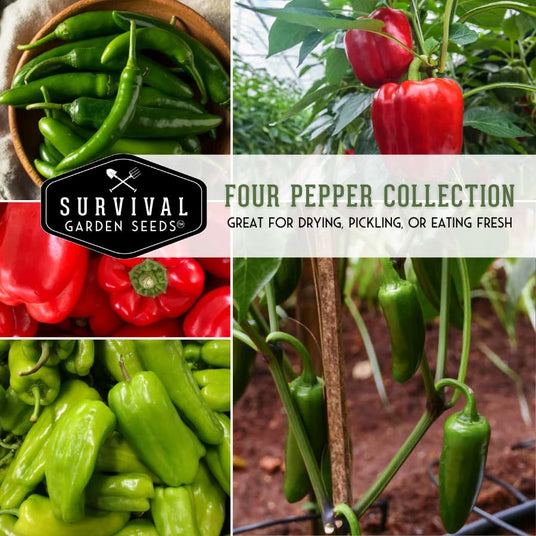
Sweet & Hot Pepper Varieties
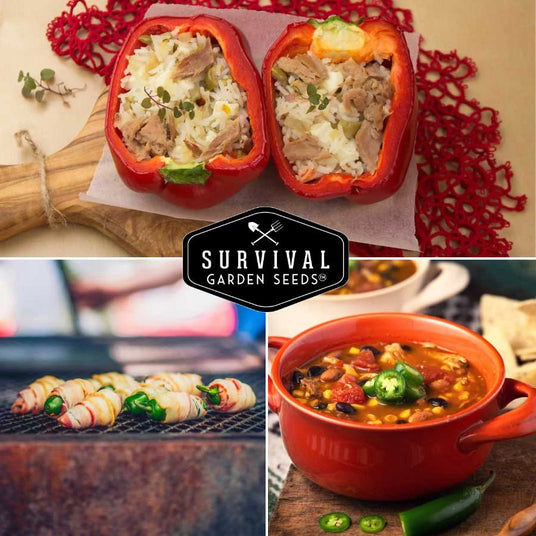
Warm Weather Crop
Why Choose Survival Garden Seeds
At Survival Garden Seeds, we believe in preparing today for tomorrow’s peace of mind. That’s why we offer only heirloom, non-GMO, and untreated seeds you can trust to nourish your family and support a sustainable lifestyle. As a family-owned American company, we’re committed to providing seeds that grow strong and true—helping you cultivate health, resilience, and beauty in your garden.
Frequently Asked Questions
What are heirloom seeds?
What are heirloom seeds?
Heirloom seeds are the types of seeds your grandparents grew. These varieties have been passed down from generation to generation. They’re old reliable open-pollinated varieties that aren’t typically grown commercially. Instead, they have a rich history that predates modern breeding techniques.
You can learn more about open-pollinated, heirloom, and non-GMO seeds in our Survival Garden Training blog.
How do I know my seeds are fresh?
How do I know my seeds are fresh?
Every seed packet includes a "packed for" date, and we germination test each seed lot before packaging to ensure you receive viable, high-quality seeds that are ready to grow.
Are your seeds treated?
Are your seeds treated?
No, we do not pre-treat our farmer seeds. All of our garden seeds for sale are untreated, open-pollinated, non-GMO, and heirloom varieties. They are kept in temperature-controlled cooler storage until they are packed and shipped to keep them pest and disease-free.
In what zones can I grow your seeds?
In what zones can I grow your seeds?
The seeds in our collections are specifically chosen from varieties that can be successfully grown from Zone 3 to Zone 10 USDA Hardiness Zones. However, individual varieties have specific needs to thrive in different environments. Each seed pack has optimal temperatures for germination and instructions on seed starting. Consult local frost dates to plan your garden and get the most out of your seeds.
What is the shelf life of these gardening seeds?
What is the shelf life of these gardening seeds?
Most seeds remain viable for 3 to 5 years or longer when stored properly. Check your seed packet for specific varieties. For best results, keep your seeds in a cool, dry place away from direct sunlight and moisture. Store them in an airtight container in a consistent temperature environment—a refrigerator or cool basement works well. Proper storage helps maintain germination rates and extends seed life well beyond the packed date.
Where are Survival Garden Seeds sourced?
Where are Survival Garden Seeds sourced?
The majority of our seeds are sourced in the United States, with a few exceptions when the seed is difficult to source domestically. Whenever we do have to source outside of the US, we ensure our seeds are safe to grow, non-GMO varieties that meet our standards for germination and reliability.
